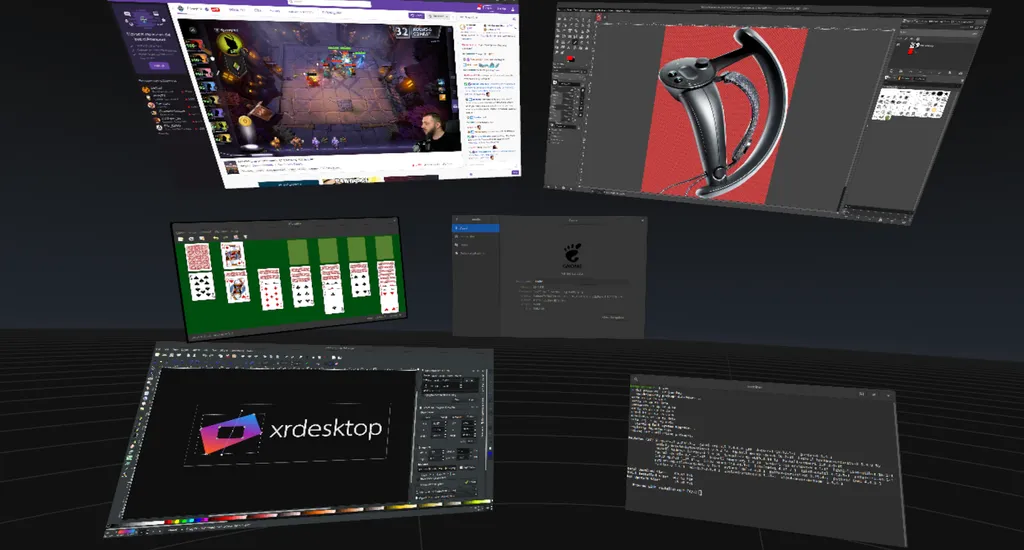Collabora’s xrdesktop, sponsored by Valve, adds full VR support to Linux desktop environments such as GNOME and KDE.
VR On Linux So Far
Linux is an open source operating system initially developed in the 90’s. Unlike Microsoft Windows, Linux is highly modular. This allows users to pick and choose which windowing system and desktop environment to use. It also allows people to modify and extend these components.
The most popular Linux windowing system is called X11. Before early 2018, the default behavior when a VR headset was connected was to treat it like a regular extra monitor. This means that each eye would be presented half of a monitor screen with no distortion correction or tracking.
In January 2018 Linux added a non-desktop property, enabled on the HTC Vive. In May 2018, X11 added support for the non-desktop property. This did not, in itself, add VR support to the Linux desktop. It simply prevented the windowing system from handling VR headsets.
A Vulkan extension was then created to allow VR runtimes such as SteamVR (which was released on Linux in 2017) to render directly to the headset via “direct mode”. A similar extension is being developed for Wayland, X11’s main alternative.
Introducing xrdesktop
Collabora’s xrdesktop is a 3D window management system which allows the user to view and control windows in VR. It works with the two most popular Linux desktop environments, GNOME and KDE. Xrdesktop supports both the HTC Vive and Valve Index, headsets which have Linux drivers. Using the HTC wands or Valve Index controllers the user should be able to grab, push, pull, scale, and pin windows. The controls can be rebinded using the SteamVR Input Tool.
Collabora also offers its own open source implementation of the OpenXR standard — called Monado — which may eventually function as a bridge for Linux to content available from storefronts such as Valve’s Steam. This new open source VR runtime for Linux uses OpenXR.
Open Source And Future Innovation
The open Linux model allows xrdesktop to individually manipulate windows without needing a “monitor” model. On Microsoft Windows, apps such as Virtual Desktop are limited to displaying physical monitors in VR, and windows are contained within these monitors.
Facebook’s Oculus Rift software tries to work around this limitation of the operating system by using a hidden virtual 4K monitor, enabled via collaboration with NVIDIA and AMD. This is still relatively clunky, however, and the instability of this workaround means that Facebook classifies the feature as “experimental” in the Rift’s settings.
Microsoft’s own Windows MR software allows for individual apps, but this software only supports Windows-based headsets, which make up just 11% of the PC VR market. As Microsoft controls the Windows operating system — it is possible the company may never make this functionality directly available to Facebook or Valve.


























